By Sarah Lozanova, Solar Energy Writer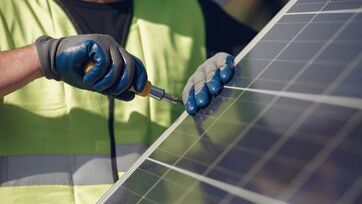 An estimated 6% of the residential solar systems installed in 2020 have battery storage, but this number varies widely by location. In Hawaii, where there is a lack of net metering laws, approximately 80% of home solar power systems have energy storage. Solar batteries are also more prevalent in California than in other states because of the Self-Generation Incentive Program and public safety power shutoffs designed to prevent wildfires. The prices of advanced lithium-ion solar storage batteries have fallen in recent years, making them more affordable to homeowners. In addition, some states or utilities offer battery rebates or tax incentives, including California, Hawaii, Illinois, Maryland, Massachusetts, and Oregon. But some may require the homeowner to install the solar system and batteries simultaneously. As storage systems increase in popularity, many homeowners want to add batteries to their existing solar panel systems. Solar batteries are especially appealing in areas with an unstable electric grid, such as areas regularly impacted by severe weather. Also, some homeowners can reduce their electric bills more with a battery due to the utility rate structure in some areas. Let’s explore this topic so you can better serve your existing customers. By Sarah Lozanova, Solar Energy Copywriter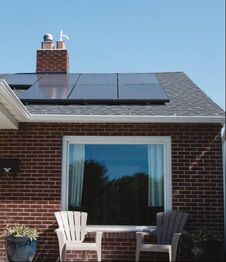 Even though the cost of going solar has plummeted in recent years, it still requires a significant upfront investment. A residential solar energy system often costs $16,000 – $25,000 or more. Fortunately for qualified homeowners, the solar tax credit can reduce the total cost by more than $4,000 or $5,000 for systems in this price range. In addition, the solar incentive significantly boosts the return on investment while reducing the payback period. Let’s explore how the solar tax credit works, who is eligible, and how to take advantage of it. What Is A Tax Credit? A tax credit is a dollar-for-dollar reduction in taxes owed to the federal government. Therefore, a $5,000 tax credit reduces income taxes to the IRS by $5,000. However, a tax credit has no value to the taxpayer if they have no tax liability. By contrast, a write-off or a tax deduction reduces total taxable income rather than the tax liability by the given amount. Unlike a tax credit, the value of a write-off depends on your tax rate. Therefore, tax credits are more valuable to the taxpayer than a write-off of the same amount. 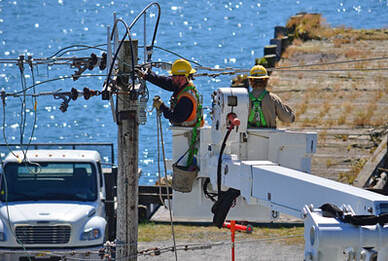 By Sarah Lozanova, Solar PV Writer Residents are buying generators and battery storage systems in anticipation of outages. Millions of California residents are bracing themselves for wildfire season’s peak. Bone-dry air and high winds are a recipe for disaster—one that brings catastrophic losses and sudden evacuations. Sadly, some of the most destructive fires in the state’s history were likely ignited by sparks from utility lines and exacerbated by heat and dryness. Utility shut-offs to prevent wildfires affect millions There are concerns that the state’s power grid was neither adequately designed nor maintained for this intensely dry season fueled by climate change. To help safeguard communities, utility companies have implemented massive preemptive power shut-offs when the risk of wildfires is highest. These preventive measures help avoid costly property damage and save lives. However, the power shut-offs are widely criticized because these disruptions affect the daily lives of millions. Though short outages are inconvenient, many of these pre-emptive shut-offs have lasted days—or even weeks. Blackouts upend daily life Lengthy power outages are severely disruptive. In many cases, residents and business owners were unaware that their power would be turned off and were left unprepared. Without electricity, many houses do not have functional telecommunications, internet, refrigeration, air conditioning, medical equipment, hot water, or cooking. Businesses were forced to shut their doors during the power outages, leaving the community without essential services. Read More... Image Credit: James Brooks Californians Look to Home Batteries as Backup - Solar Energy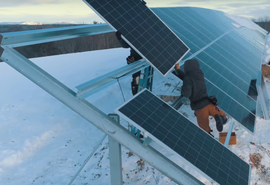 By Sarah Lozanova, Solar PV Writer There is now enough installed solar energy capacity in the U.S. to power 13.5 million homes, and this amount is expected to double in the next five years. The solar energy industry is part of a very dynamic market. Many factors — including government policies, fossil fuel costs, solar energy technology advances, commodity prices, and even public awareness of the climate crisis — impact solar energy deployment across the globe. What’s in store for the year ahead? Let’s explore some trends in solar energy to better understand what is on tap for 2020. Solar Battery Prices Are Falling Solar energy is an intermittent energy source. This means that solar panels produce power when the sun is shining and not when it isn’t. Energy storage allows the solar system to supply power when the sun has set or in cloudy weather, expanding the capabilities of solar energy systems. There are two main types of solar batteries: lead-acid batteries (like you have in your car) and lithium-ion batteries. The latter is far more advanced, longer-lasting, and requires less maintenance. Not surprising, lithium-ion batteries have a higher upfront cost, but the price has been decreasing significantly in recent years. The cost of lithium-ion battery storage fell 35 percent from the first half of 2018 to now (December 2019) and 76 percent since 2012. This downward price trend is good news for renewable solar energy in 2020 — and it’s likely to continue. Natural gas plants are often used to meet peak energy loads because they can more easily be turned on and off than coal or nuclear power plants. Lower costs make it easier for intermittent renewable energy sources — such as wind and solar — to be cost-competitive with dispatchable fossil-fired power plants. Price decreases in utility-scale battery banks now make solar plus energy storage competitive in many areas on price alone. Battery banks can make it unnecessary to fire up power plants during times of peak demand, reducing fossil fuel consumption. The greater the capabilities of solar, the less attractive and financially viable these peaker power plants become. On the residential side, more homeowners are relying on solar systems with battery storage for emergency power during grid outages than ever before. This is an especially attractive option in areas prone to extended power outages due to natural disasters or with inadequate utility infrastructure, like Puerto Rico. Read More... Image Credit: Sundog Solar Trends in Solar Energy - Clean Energy Writer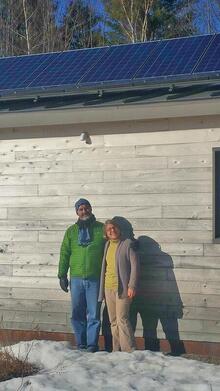 By Sarah Lozanova, Solar Energy Writer This Maine family created a resilient home with a combination of solar power, battery storage, and energy efficiency. When a windstorm last fall knocked down trees and caused 500,000 people in Maine to lose power, Eric and Alison Rector knew that their home had emergency power. Although neighboring farmhouses were without electricity for six days, the Rectors enjoyed many of their modern luxuries. Their 1,100 square foot high-performance home uses a dynamic combination of energy efficiency and solar energy with battery backup. Maine has one of the least reliable electric grids in the U.S. Multiple day power outages are relatively common after a severe storm, and the state ranks #49 in grid reliability, according to the Department of Energy. Many rural properties with wells are also without running water during power outages because pumps needs electricity to operate. These factors helped motivate the Rectors to find solutions to make their household more resilient. Hybrid Solar System Provides Emergency Power The Rector’s 6-kilowatt solar PV array provided backup electricity throughout the record-breaking outage last fall. “One 48-volt battery bank gives us running hot and cold water, heat, ventilation, lights, and power for some appliances,” says Eric. “If our solar system didn’t have batteries, we would be stuck with no power during grid outages despite all our solar panels.” The solar panel system was designed and installed by Sundog Solar and originally contained just 3-kilowatts of solar panels and the battery bank. Eric and Alison later upgraded the system and added 3 more kilowatts of generation capacity. The Rector house was built by GOLogic to the Passive House Standard, a stringent German certification for energy efficiency, resulting in homes that use 80% less energy for heating and cooling than a code-minimum house. Because the solar was producing more electricity than they were consuming, Eric and Alison purchased a 2017 Chevy Volt to utilize the surplus. They can now drive to and from town with solar energy. Eric has been very satisfied with the solar system’s inverter/charger because of the peace of mind that it offers. “I call the Conext XW 6048 ‘the magic box’ because it seamlessly transitions between being on grid and off grid,” says Eric. “The way Sundog Solar designed the system, the ‘magic box’ keeps the battery bank full at all times when there is grid power. During outages, there is no need to switch anything manually. All our critical systems stay powered, and the solar system charges the batteries until the grid power returns.” Read More... |